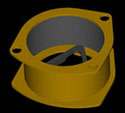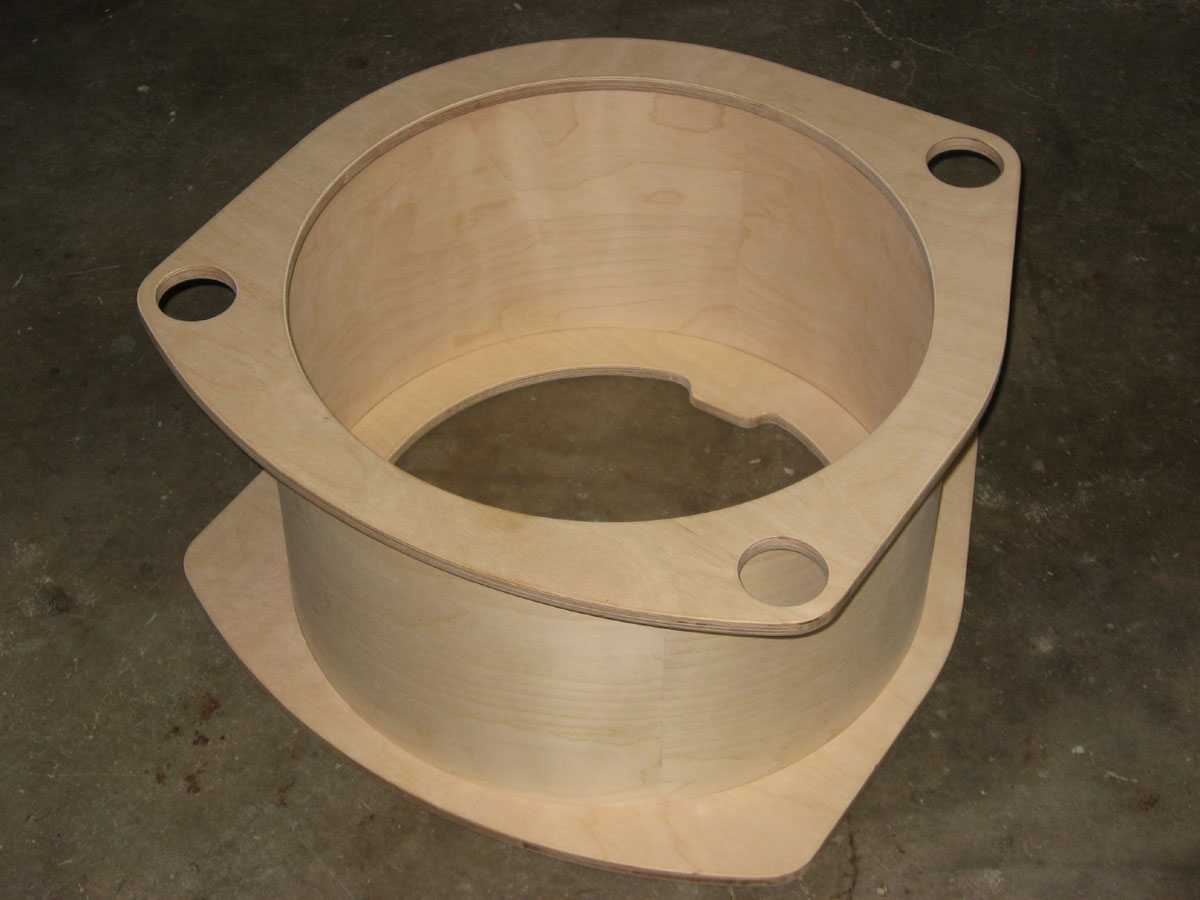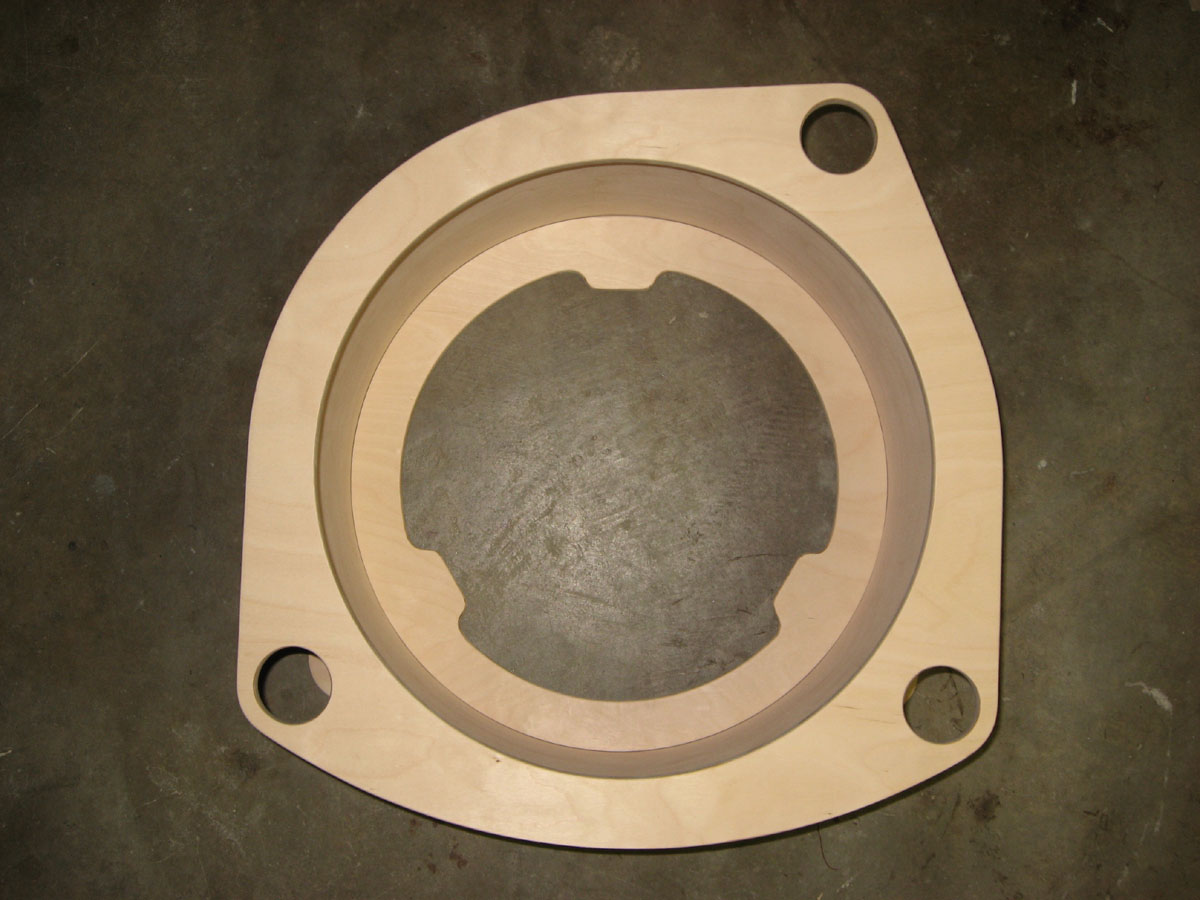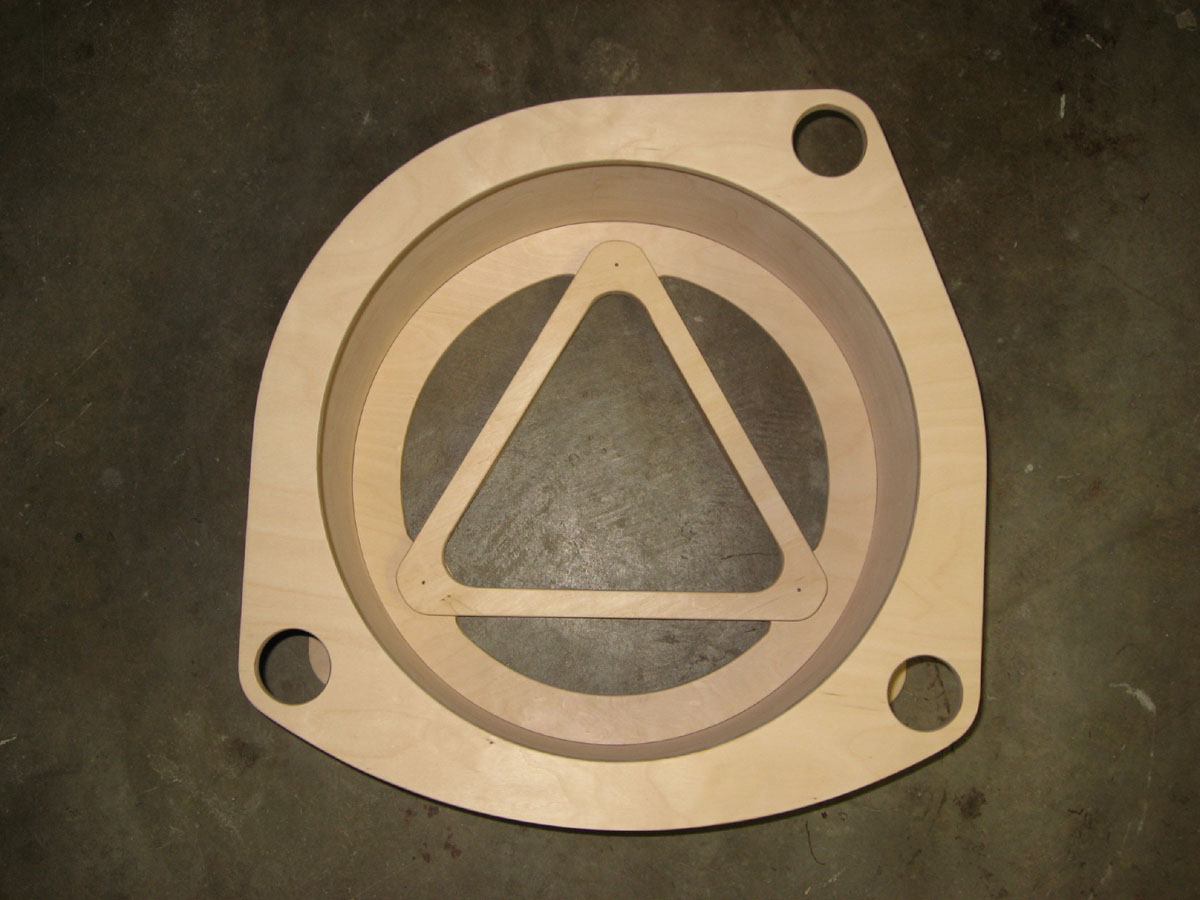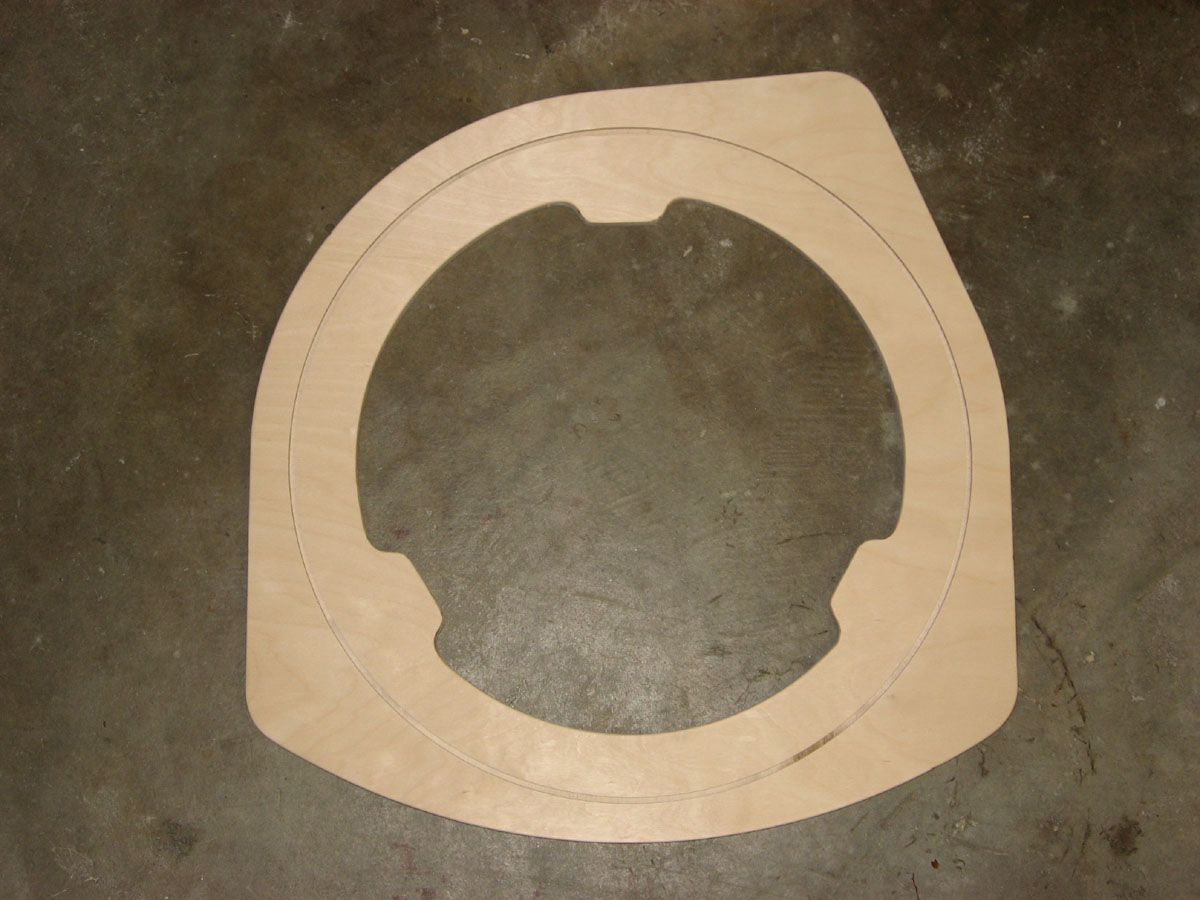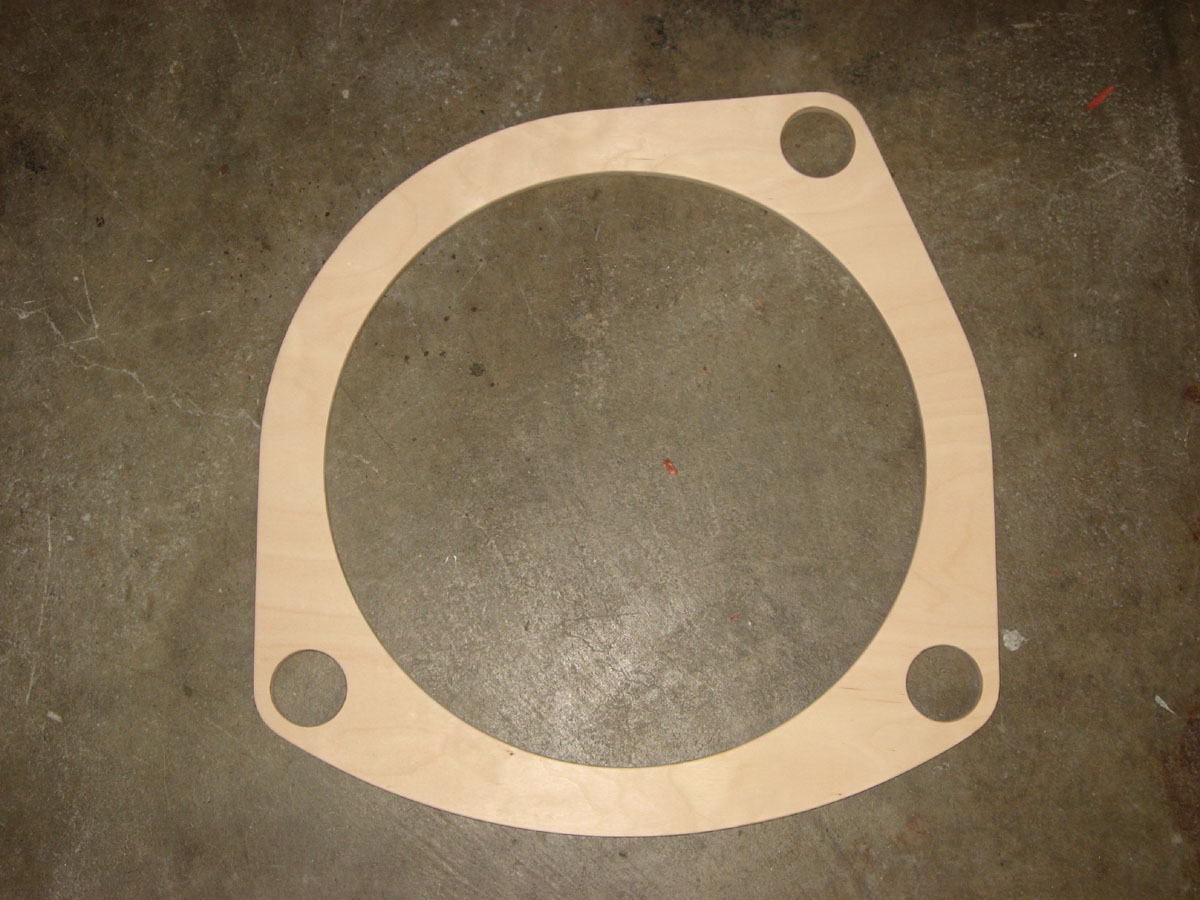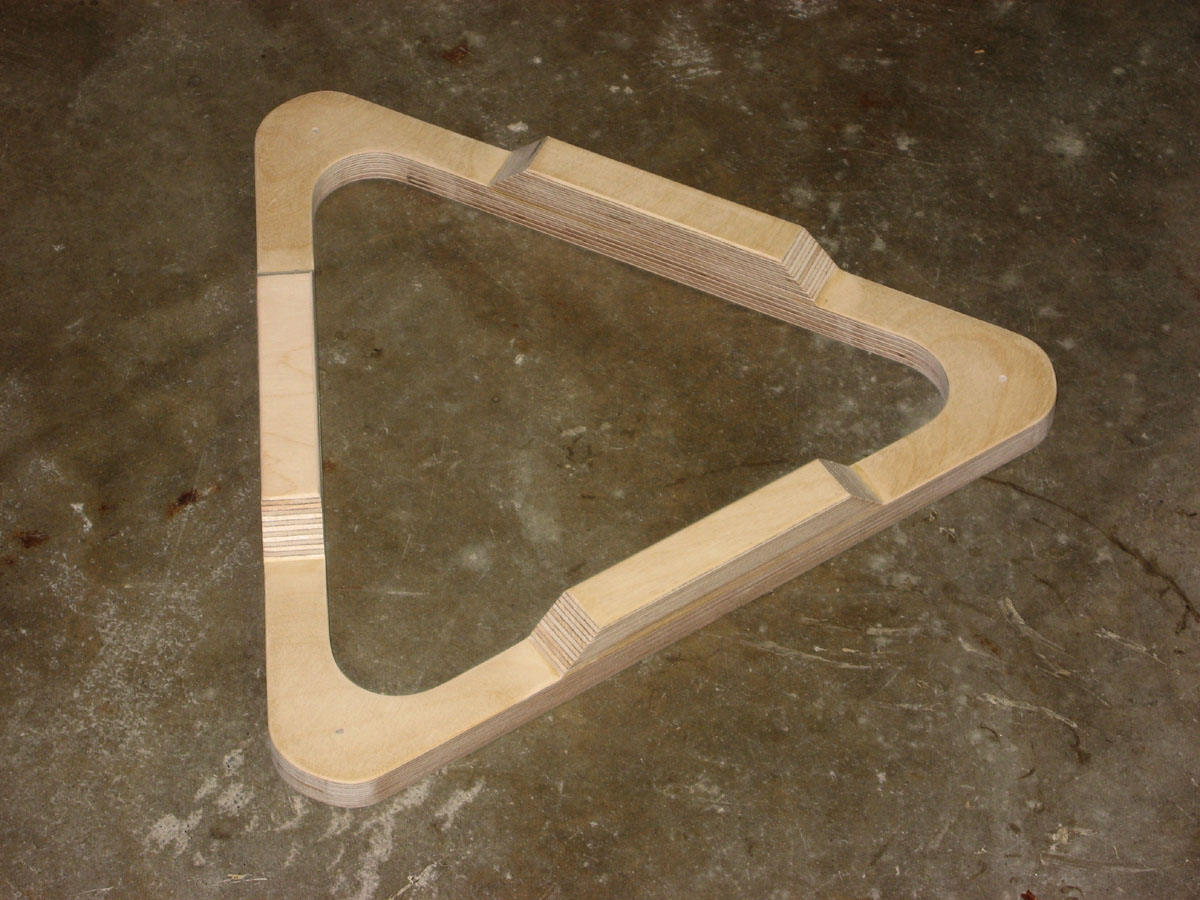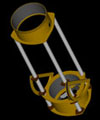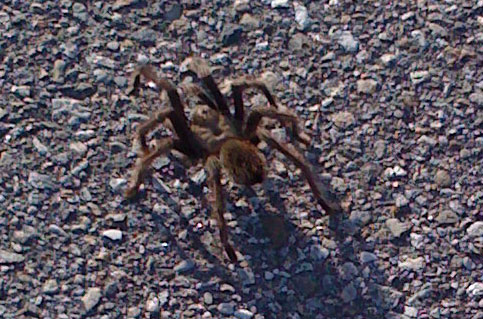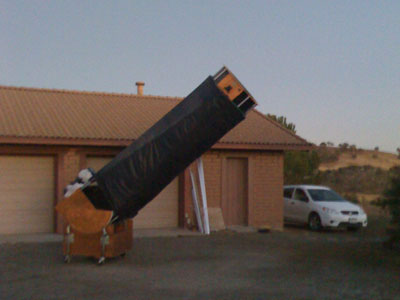General
Mark Wagner, Richard Navarrete, Steve Gottlieb, Peter Natscher, Rogelio Bernal Andreo and I met with our host, Kevin Ritschel, at his ranch in Willow Springs on Saturday, March 13.
Conditions
By sunset, the wind had subsided. The transparency was about average. Seeing was a bit soft early on, but it improved to just about average later in the evening.
Highlights
The zodiacal band was very obvious, pointing straight up, all the way to the Pleiades. The spiral arms around M 81 were obvious on both sides, although one side is much easier than the other. M61 was showing a lot of structure, reminiscent of photographs I’ve seen of that galaxy. Steve showed me a beautifully complex and surprisingly bright Sharpless object (Sh2-311? I’m not sure) in his 18″ Starmaster telescope. We also looked at a couple of galaxies showing intricate detail in Peter Natscher’s 24″ Starmaster telescope. Finally, Richard showed me an easy Hickson group (which one?) in his equatorially mounted Obsession 18″ telescope. With my Meade Lightbridge 12″, I observed mostly Herschel 400 objects in Cam, Mon, Pup, Pyx and Vir. Among those objects, N2403/N2404 and the group composed of N4216, N4222 and N4206 were spectacular.
Star Hopping Technique
When printing an observing list, I always sort the objects by their Uranometria page and then by right ascension. I also sort the Uranometria pages from West to East and from South to North. Additionally, as a convenience, I always try to choose my targets in order to minimize the number of Uranometria pages I’ll have to refer to. When I want to point the first object on a given Uranometria page, I start by locating a naked eye star on that page as close as possible to that object. I then point my scope to that star using a red dot finder. Once I’ve confirmed the orientation of the field of view, I can hop from object to object using my trusty Stellarvue 9×50 RACI finder scope in only a few seconds! Once the finder scope cross hair indicates the suspected location for an object, I look in the eyepiece, and the target is right in the middle of the field of view. Star hopping can be faster, more accurate, more fun, more rewarding and a lot more silent than a Goto! But it does require a bit of preparation…
The Big Freeze
My dew control equipment worked flawlessly, which allowed me to observe until about 12:30am (a respectable 5 hour session…). Around that time, the cold was becoming unbearable. No one specific part of my body was especially cold, but I realized that I was not able to focus anymore for long periods of time. I decided to take shelter in my car and slept for a couple of hours. Around 3am, I was woken up by Rogelio’s car headlights. I then realized that I was extremely uncomfortable because of the cold, and I’d better do something about it. So I packed the rest of my equipment and left around 3:30am, with the car heater set to its maximum setting. It took me a good hour to warm up. I made a quick pit-stop in Gilroy and picked up some breakfast at the drive-thru of a fast food restaurant. Needless to say that under such circumstances, it tasted mighty good!
Acknowledgments
Big thanks to our host Kevin Ritschel. I’m hoping to visit the Deep Sky Ranch again next month!
Observing Log
Location: Deep Sky Ranch (Willow Springs)
Telescope: Meade Lightbridge 12″ F/5
Eyepieces used:
- Televue Panoptic 27mm (56x - 1.2° TFOV)
- Televue Nagler 16mm type 5 (95x - 52′ TFOV)
- Televue Nagler 9mm type 6 (169x - 29′ TFOV)
- Televue Nagler 7mm type 6 (217x - 22′ TFOV)
- Televue Nagler 5mm type 6 (305x - 16′ TFOV)
(All times are PST)
NGC 1961 GX Cam 05h43m15.3s +69°23’17″ 11.8m 07:30pm
Moderately faint round core roughly 20″ in diameter, surrounded by an extremely faint halo which I estimated to be 2′x1′ E-W. Moderately faint (mag 13.9) superimposed star 30″ SSE of the core.
NGC 2403 GX Cam 07h37m53.2s +65°34’57″ 8.8m 07:45pm
Easily spotted in 9×50 finder scope. Moderately bright core 1.5′x45″ elongated NNE-SSW surrounded by a moderately faint halo 4′x3′ elongated WNW-SSE showing some mottling. Very faint extensions seem to extend 6′x3.5′ WNW-SSE when observed at low power using averted vision. The HII region NGC 2404 appears as a small round moderately bright knot about 1.5′ ENE of the core. Many superimposed stars are visible.
NGC 2251 OC Mon 06h35m12.8s +08°21’26″ 8.8m 08:05pm
About 30 moderately bright to faint stars within an area roughly 10′x4′ NNW-SSE. Just north of much larger but sparse open cluster Basel 8.
NGC 2421 OC Pup 07h36m41.2s -20°38’18″ 9.0m 08:25pm
Barely detected in 9×50 finder scope. About 25 moderately bright to faint stars within 6′. A double star (mag 10.8 and 11.7) is isolated near the center of the cluster. A few moderately bright stars to the south. Do they belong to this cluster?
NGC 2440 PN Pup 07h42m24.3s -18°14’11″ 11.5m 08:35pm
Appears very bright, small and slightly blue using direct vision at low power (95x). At high magnification (305x), faint extensions can be seen to extend 50″x30″ elongated in the WSW-ENE direction. The core region is very bright, round, featureless, and measures about 25″ in diameter.
NGC 2479 OC Pup 07h55m35.2s -17°44’27″ 9.6m 08:50pm
Appears as a very faint smudge in 9×50 finder scope. About 40 moderately bright stars within 10′.
NGC 2482 OC Pup 07h55m39.6s -24°17’22″ 8.8m 08:55pm
Seen in 9×50 finder scope. About 40 moderately bright stars scattered within 10′. Bright (mag 8.0) slightly yellow star about 8′ WSW.
NGC 2509 OC Pup 08h01m17.0s -19°05’02″ 9.3m 09:00pm
Compact group of over 2 dozen moderately faint stars over a milky background. Dense V-shaped core. Loose subgroup about 3′ E of the core. Best seen at 169x.
NGC 2527 OC Pup 08h05m24.8s -28°10’49″ 8.3m 09:10pm
Best seen at low power (57x) using the Panoptic 27mm. About 2 dozen moderately bright stars failry uniformly spread over an area roughly 8′ in diameter.
NGC 2613 GX Pyx 08h33m51.1s -23°00’44″ 11.1m 09:15pm
Moderately faint core 45″x15″ WNW-ESE surrounded by a fairly faint halo 4′x1′ with the same orientation.
NGC 2506 OC Mon 08h00m31.8s -10°48’05″ 8.9m 09:30pm
Seen in 9×50 finder scope. About 2 dozen moderately bright to moderately faint stars within an area 10′ in diameter over a background of faint stars too numerous to count.
NGC 2539 OC Pup 08h11m07.5s -12°51’08″ 8.0m 09:35pm
Seen in 9×50 finder scope. Located 10′ NW of bright yellow 19 Pup. About 50 moderately bright stars scattered fairly uniformly within an area 12′ in diameter.
NGC 4216 GX Vir 12h16m27.8s +13°05’20″ 11.0m 10:50pm
Small bright core surrounded by a moderately faint halo 7′x1′ elongated SSW-NNE. Fairly faint (mag 13.7) superimposed star 45″ ESE. Smaller and much dimmer NGC 4222 and 4206 were seen in the same field of view at 95x.
NGC 4371 GX Vir 12h25m28.8s +11°38’36″ 11.8m 11:05pm
Small (about 20″) and pretty bright core slightly elongated E-W surrounded by a faint halo 2′x1.5′ with the same orientation.
NGC 4429 GX Vir 12h27m59.9s +11°02’48″ 11.0m 11:10pm
Fairly bright core 45″x30″ elongated E-W with a stellar nucleus, surrounded by a moderately faint halo 4′x1′ with the same orientation. Located less than 2′ SSW of a bright (mag 9.1) star.
NGC 4435 GX Vir 12h28m13.8s +13°01’06″ 11.5m 11:20pm
About 1′ in diameter, slightly elongated N-S. Moderately bright stellar nucleus. Forms a pair called the “Eyes” with NGC 4438 located 5′ SSE.
NGC 4438 GX Vir 12h28m19.2s +12°56’53″ 10.9m 11:20pm
Fairly bright core 45″x15″ elongated NNE-SSW with a bright stellar nucleus. Halo is 3′x1′ in the same direction. Forms a pair called the “Eyes” with NGC 4435 located 5′ NNW.
NGC 4478 GX Vir 12h30m50.8s +12°16’01″ 12.2m 11:40pm
Fairly bright round core 30″ in diameter. Slightly fainter halo extends roughly 1′ in size. Located near M 87 and NGC 4476.
NGC 4365 GX Vir 12h25m01.7s +07°15’24″ 10.5m 11:50pm
Framed by 2 moderately bright field stars. Small (about 20″) bright round core. Faint halo 3′x1′ elongated NE-SW. Forms a nice pair with smaller and fainter NGC 436 located 5′ NE.
NGC 4261 GX Vir 12h19m56.8s +05°45’54″ 11.4m 12:00am
Bright round core 45″ in diameter. Faint halo 2′x1.5′ elongated N-S. Nice field of view with NGC 4257, NGC 4264 and MCG 1-31-53.
